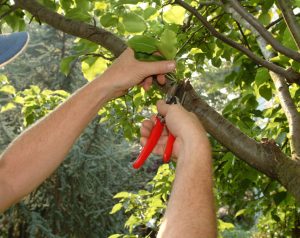Pruning Trees & Shrubs

Prune to remove dead or damaged wood or unwanted growth, improve shape or create special effects, rejuvenate old plants, and promote flowering, fruit production, or colorful stems or foliage.
The number-one rule of pruning is don’t fight nature. When selecting flowering shrubs, save yourself some work by carefully considering the ultimate size of the plant and where it is to be located. Pruning should enhance the natural shape and performance of your shrub, not disguise mistakes made in plant selection or placement. Prune to remove dead or damaged wood or unwanted growth, improve shape or create special effects, rejuvenate old plants, and promote flowering, fruit production, or colorful stems or foliage.
When should you be pruning trees and shrubs?
An old adage says, “Prune when the knife is sharp,” but it is wrong to suggest that effective pruning can be done at any time. As a general rule of thumb, avoid pruning any flowering shrub in late summer or autumn because this can stimulate tender new growth, which is susceptible to damage by cold temperatures.
Spring flowering shrubs such as Forsythia, Purple Sand Cherry, Flowering Almond, Lilac and Mock Orange bloom on the previous season’s growth, sometimes referred to as “old wood.” In other words, the flowers we see this April, May and June actually developed on the plant late last summer. For maximum flower production next year, prune spring flowering shrubs immediately after they bloom.
Summer and early-autumn flowering shrubs such as Butterfly Bush, Rose of Sharon and PeeGee Hydrangea bloom on the current season’s growth or “new wood,” which means flowers have developed since growth started that spring. These plants should be pruned just as growth starts in spring.





Leave a Reply
You must be logged in to post a comment.